
image by Eugene Ipavec, 11 April 2006

Last modified: 2008-09-27 by dov gutterman
Keywords: colombia |
Links: FOTW homepage |
search |
disclaimer and copyright |
write us |
mirrors
Editorial Remark: It must be noted that all the opinions are of the authors and not of FOTW. Our site is non-political and concentrates only on vexillological issues.
See also:

image by Eugene Ipavec, 11 April 2006
I came across this image during a ceremony of the Peace
Process between the Colombian Government and the AUC (biggest union of paramilitary
groups in Colombia).
The image is a green ribbon in the middle (meaning peace) on a
white background. This image was seen during a demobilization of
AUC troops, especifically in one of the ceremonies of the many
subfactions that are part of the ACBCB
- Autodefensas Campesinas - Bloque Central Bolívar.
Source: <www.terra.com.co>
E.R., 11 April 2006
ELN
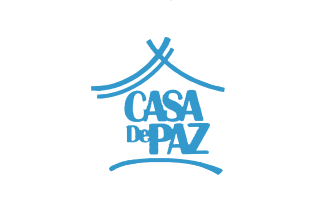
image by Eugene Ipavec, 14 September 2007
There are current coversations between the Colombian
government and the ELN guerrilla in
order to try to get to a negotiation point that will lead to a
peace deal. During these talks, the Eln has been granted a safe
house (authorized by the Government) to hear different opinions
from different sectors and have a more constructive dialogue
towards the negotiations. This place is called Casa de Paz (Peace
House).
During these talks I have seen a flag displayed.
Source: Casa de Paz
official website.
E.R., 14 September 2007
Both were founded in 1848, the Partido Liberal Colombiano -
Liberal Party's traditional color is red, and the Partido
Conservador Colombiano - Conservative Party's traditional color
is blue. They've shared power for most of the XIX and XX
centuries, a famous joke says that the true meaning of the
Colombian flag is: Yellow for our riches, blue and red for those
that distribute them among themselves. The "L" and
"C" were adopted as "official logos" and
featured in the flags.
Jaime Vengoechea, 10 Febuary 2003

image by Eugene Ipavec, 7 September 2006
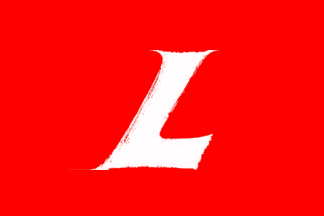
image by Eugene Ipavec, 7 September 2006
The official website of the PLC (Partido Liberal Colombiano,
Colombian Liberal Party) is <www.partidoliberal.org.co>.
The explanation of the symbols (taken form the official website):
"The red color, as interpretation of love, fraternity and
tolerance, is the standard of the Colombian Liberal Party and it
will go together with the current symbol and also with the
International Socialist, to which is affiliated".
E.R., 30 May 2005
The Liberal party of Colombia seems to use a plain red flag,
which appears in their site header. Though partially furled, it
does not seem to contain a white capital "L".
No mention is made of a party flag on its "Symbols"
page. The "L" is only listed as the party logo.
Eugene Ipavec, 7 September 2006
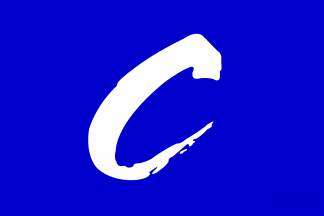
image by Eugene Ipavec, 7 September 2006
The official website of the Partido Conservador Colombiano
(Colombian Conservative Party) is <www.partidoconservador.com>.
E.R., 30 May 2005
The Conservative party of Colombia has no clear photo or
description of their flag on their website, but a statute in the
party constituon mentions it:
"ARTÍCULO 5.- El color del Partido Conservador es el azul.
El emblema, símbolos, himno y bandera adoptados como distintivos
del Partido están debidamente registrados en el Consejo Nacional
Electoral".
There is also a tiny photo of it flying in front of the party HQ
at <partidoconservador.org>.
The shade of blue seems to be the same as that of the national
flag right next to it.
Eugene Ipavec, 7 September 2006
.jpg)
logo
image from official
website
The Movimiento AICO (Autoridades Indígenas de Colombia), or
Colombian Idigenous Authorities. With the establishment of the CRIC, the Guambiano or Misak tribe got some
representation and a movement to stand up for their rights.
However in 1980 the Guambiano people left the CRIC because they
thought the CRIC was merely a buisness-related organization, and
too far from the native community it said it represented. That is
when the AISO (Autoridades Indígenas del Suroccidente de
Colombia), or South West Colombian Indigenous Authorities is
established. Then in 1987, togehter with the Cabildo Indígena
Pasto, Cabildo Indígena Camsá and Confederación Indígena
Tairona they established the Movimiento AICO for the
"political, economic and social ecological reconstruction
and recovering of the proper cultural values of the native
peoples. It has has nationwide representation at Department and
City levels, at different governmental branches.
Source: official website.
E.R., 12 November 2007
.jpg)
logo
image from Medellin
Mayor election card
The Movimiento ALAS-Equipo Colombia (lit. WINGS - Team
Colombia) is a center-right Party which is a merger between two
already existing political parties: ALAS and Equipo Colombia.
ALAS (lit. WINGS) stands for Alternativa Liberal de Avanzada
Social (Advanced Social Liberal Alternative) and Equipo Colombia
(Team Colombia). ALAS emerged in the late 1990's as an internal
group within the Liberal Party, with
representation in Congress only for the Department of Cesar. However in 2005 ALAS broke away
from the Liberal Party and started to join forces with the Equipo
Colombia Movement oficially on December 14, 2005. Equipo Colombia
on the other hand, was a political movement established back in
1992 in the Department of Antioquia
under the name Equipo Unionista, most of them coming from the Conservative Party. The Movimiento
ALAS-Equipo Colombia has local and national representation at
various levels.
Sources: Spanish
wikipedia, official
website, Medellin
Mayor election card.

flag
image by Dov Gutterman, 7 September 2007
.jpg)
logo
image contributed by Jaumé Ollé
CLBN - Coordinadora Libertaria Banderas Negras (Black Flags
Libertarian Coordination), is an anarchist movement established
in 2001.
E.R., 2 September 2007
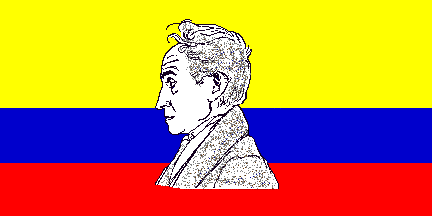
image by Guillermo Aveledo, 30 November 2000
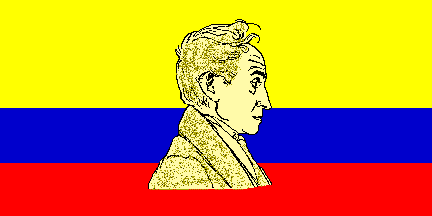
image by Guillermo Aveledo and Eugene Ipavec, 8
June 2006
Here's the flag of the Movimiento Bolivariano para la Nueva
Colombia (Bolivarian Movement for the New Colombia), what has
been instituted as the political wing of the Revolutionary Armed Force of Colombia -
People's Army (FARC-EP), and founded early this year.
The flag is a typical Colombian tricolori, with a portrait of
Simon Bolivar (in black and white and certain shades of grey)
centered on it. The portrait used is a reproduction of the famous
(and supposedly more accurate) portrait of Bolivar engraved by
French artist Francois Desire Roulin (1796-1874) at Bogota dated
February 15th, 1828.
Oddly enough, it seems an unbecomig choice for a revolutionary
party/army: by 1828 Bolivar was serving as dictator of Colombia
(then the Great Colombia; the union of Nueva Granada, Quito and
Venezuela), allied with conservative and clerical groups who were
interested in the union of the republics and, willing to support
Bolivar, played for the predominance of Bogota in such an union.
The rest is history. Perhaps this paradox is explained by the
fact that, in the actual portrait, Bolivar faces rightwards, and
not leftwards, as is used by the FARC-EP.
Guillermo Aveledo, 30 November 2000
The flag size should be the same as the Colombian one and the
face of Simón Bolívar should be on yellow background instead of
white, and looking towards the right, and not look towards the
left.
It is based upon a Photo taken on August 29, 2000, during the
launching of the illegal movement by the Farc at <www.sedoparking.com>.
The event is the official launching of the Bolivarian Movement
for the New Colombia (Movimiento Bolivariano para la Nueva
Colombia) during the failed Peace Process between the Colombian
Government and this guerrilla group, during the period of
1998-2002. This act was carried out in the twon of San Vicente del Caguán, a Municipality
of the Department of Caquetá which was
part of a Demilitarized Zone that the Government voluntarily gave
to this guerrilla in order to provide security and trust to
conduct the Peace Process.
E.R., 4 and 8 June 2006
.jpg)
image from Medellin
electoral card
The Partido Opción Centro (Center Option) - The Party was
established on November 25, 2005, in the city of Bogota, with the
participation of delegates from 19 Departments, gathering people
who wanted to represent the political option for peace and
reconciliation (center) and the green environmental issues as
well (a non-existing political option at the time in Colombia).
It currently has representation in two Departments and several
other cities nationwide.
Sources: Medellin
electoral card, official
website.
E.R., 22 November 2007
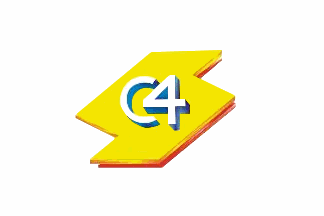
image contributed by E.R., 16 June 2005
There is a political movement in Colombia called
"Movimiento Compromiso Civico Cristiano con la
Comunidad" (Civilian Christian Committment with the
Community Movement) which is abbreviated as PC4, which stands for
Partido C4 (or C4 Party). It currently has one seat in Colombia's
Senate. Its official website is <www.pc4.org>.
E.R., 16 June 2005
Speaking of the PC4 party (which according to the new law is
not a valid political party anymore because it did not achieve
enough votes in the 2006 elections), the image featured on the
website is the flag, but actually it should have the same ratio
as most standard flags.
E.R., 12 August 2007
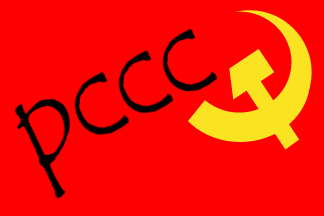
image by Eugene Ipavec, 27 May 2006
There is a flag on plain red background, resembling the same
colors as the Partido Comunista Colombiano (Colombian
Communist Party). This flag is the flag of the PCCC, which
stands for Partido Comunista Colombiano Clandestino (Colombian
Clandestine Communist Party), an organization that runs parallel
to Movimiento Bolivariano para la Nueva Colombia (Bolivarian
Movement for the New Colombia). This PCCC organization is an
organization created by the FARC in
order to replace the original PCC (Colombian Communist Party)
because the Farc believes that the PCC is not radical enough and
does not consider armed struggle to reach power. The flag is, as
I mentioned before, a plain recangular red flag, with the letters
PCCC in black on the flag in diagonal form starting from the
bottom left and ending on the top right, on the top right having
a yellow hammer and sickle.
Sources: Resistencia - Farc online magazine at <redresistencia.org>.
ANNCOL - Farc news website at <www.anncol.org>.
Semana magazine edition
October 1, 2001, page 52.
E.R., 27 May 2006
Unusual in a communist flag for the emblem to be in the fly.
Eugene Ipavec, 27 May 2006
Variant
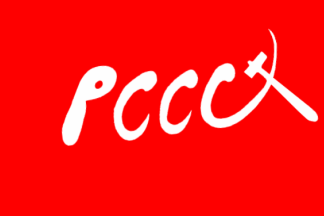
image by Eugene Ipavec, 30 May 2006
I found a variant of the flag of the PCCC. This time the
letters appear in white, plus the hammer and sickle (also in
white). Background is plain red and the design resembles pretty
much the flag of the PCC.
Source: <www.anncol.org>.
E.R., 30 May 2006
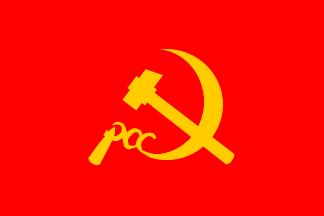
image by Eugene Ipavec, 29 July 2007
PCC stands for Partido Comunista Colombiano (Colombian
Communist Party). This organization was established in 1930. Its
official website is <www.pacocol.org>.
E.R., 23 March 2005 and 25 December 2006
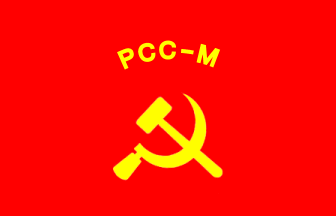
image by Eugene Ipavec, 23 December 2005
The Partido Comunista de Colombia - Maoísta (Colombian
Communist Party - Maoist) is a split group from the PCC
(Colombian Communist Party). The PCC-M was established in 2001.
It has an official wensite: <pccm0.tripod.com>. the
PCC-M's flag is the same as the PCC's flag regarding ratio of the
hammer and sickle.
E.R., 23 March and 23 December 2005
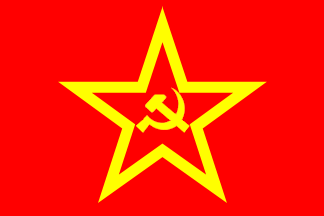
image by Eugene Ipavec, 29 July 2007
The Partido Comunista de Colombia - Marxista Leninista
(Colombian Communist Party - Marxist Leninist) was a split group
of the Colombian Communist Party, established in 1967. The armed
wing of the PCC-ML was the EPL
(Ejército Popular de Liberación).
E.R., 23 March 2005
image from wikipediaThere
was a Colombian armed guerrilla group: Partido Revolucionario de
los Trabajdores de Colombia (PRT), or Colombian Revolutionary
Workers Party. The party was founded in 1982, but started its
amed struggle in 1984. It emerged out of the 'Majority' faction
of the Marxist-Leninist-Maoist Tendency, abbreviated as Tendencia
ML (ML Tendency). The ML Tendency emerged in late 1974/early
1975, after the 4th plenary session of the Central Committee of
the Communist Party of Colombia
(Marxist-Leninist) (PCC(ML)). The founders of Tendencia ML,
had been based in the Pedro Vásquez Rendón regional committee
of PCC(ML) in the Department of Antioquia.
They opposed the directive of the PCC(ML) party leadership that
cadres in the urban labour, student and teachers movements had to
shift to the countryside to join the Popular
Liberation Army. The Tendencia ML criticized PCC(ML) for
giving insufficient importance to trade unionism, electoral work
and other mass struggles.
Regional committees of Tendencia included: Antioquia: Pedro
Vásquez Rendón Western Colombia: Ricardo Torres
Bogotá/Cundinamarca: Enver Hoxha Atlantic Coast: Bernardo
Ferreira Grandet
Tendencia ML was riven by internal divisions. By the late 1970s,
two separate groups had emerged, the 'Majority' and the
'Minority'. The 'Majority' would later form the Workers
Revolutionary Party (PRT) whereas the 'Minority' joined forces
with the Revolutionary Unification Movement - Marxist-Leninist,
merging into it by 1982.
The PRT was a group that had broken away from the Communist Party
of Colombia (Marxist-Leninist) in the mid-1970s. It was mainly
active in the Departments of Sucre and Bolívar.
When the PRT militias were demobilized in january 25, 1991 it had
around 200 fighters. Apart from its armed struggle PRT maintained
an open mass front, the trade union organization called Corriente
de Integración Sindical.
Sources: wikipedia,
<www.mediosparalapaz.org>.
E.R., 3 September 2007
PTC (Moirista) - Partido del Trabajo de Colombia (Moirista)
(Colombian Workers Party (Moirist)) was established in
2001, based on the Organización Comunista de Colombia - Marxista
Leninista Maoísta (Colombian Communist Organization - Marxist
Leninist Maoist) which in turn was established back in 1990. The
establishment of the PTC (Moirista) was due to the abandoning of
the Marxism-Leninism doctrine by the Epl.
E.R., 3 September 2007
.gif)
logo
image by Eugene Ipavec, 3 November 2007
It is the logo of the Corporación Democracia (Democracy
Corporation), an organization that comprises demobilized
combatants from the follwoing Auc
structures:
- Heroes of Granada Bloc (Bloque
Héroes de Granada)
- Bloque Cacique Nutibara (logo)
- Bloque Héroes de Tolová
I have not seen a flag yet, but I do think they have one.
Source: Screenshot from official website.
E.R., 3 November 2007

image by Eugene Ipavec, 3 November 2007
I found recently on the web the flag of a Colombian
organization at a rally. This organization is called FUNCAMIPAZ
(Fundación 'Caminate por la Paz', or Walker for Peace
Foundation). It is made up of former Auc combatants, and it is
established in Medellin. It supports sports activities and also
farming projects.
Source: Corporación
Democracia website.
E.R., 3 November 2007
There's a group called Erg (Ejercito Revolucionario
Guevarista, or Guevarist Revolutionary Army), named after Ernesto
Guevara de la Serna, alias "El Che". This is a
breakaway faction of the Eln.
The remnantas of the group, 45 members total, demobilized on
August 14, 2008, on the Municipality of Carmen de Atrato in the
Department of Choco. Its area of influence was the Department of Choco, the Southwesternt part of the
Department of Antioquia and the
Department of Risaralda.
For more info please see: High
Commissioner for Peace, official website, Ministery
of Defense web site, General
Command of Military Forces web site, El
Tiempo and El
Mundo.
The flag for this group is supposed to be the same color scheme
as the Eln flag with the same
proportion as well, only that in the middle it features Erg logo.
E.R., 16 August 2008